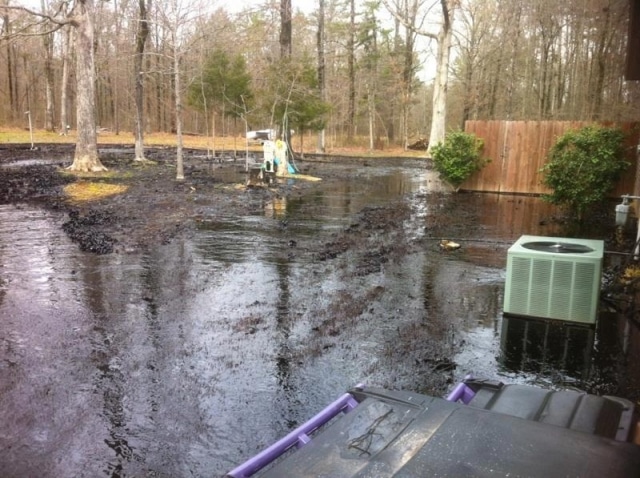The Federal Aviation Administration (FAA) has had a “no fly zone” in place in Mayflower, Arkansas since April 1 at 2:12 PM and will be in place “until further notice,” according to the FAA website and it’s being overseen by ExxonMobil itself. In other words, any media or independent observers who want to witness the tar sands spill disaster have to ask Exxon’s permission.
Mayflower is the site of the recent major March 29 ExxonMobil Pegagus tar sands pipeline spill, which belched out an estimated 5,000 barrels of tar sands diluted bitumen (“dilbit”) into the small town’s neighborhoods, causing the evacuation of 22 homes.
The rules of engagement for the no fly zone dictate that no aircraft can fly within 1,000 feet of the ground in the five-mile radius surrounding the ExxonMobil Pegasus tar sands pipeline spill. The area located within this radius includes the nearby Pine Village Airport.
The Arkansas Democrat-Gazette revealed that the FAA site noted earlier today that “only relief aircraft operations under direction of Tom Suhrhoff” were allowed within the designated no fly zone.
Suhrhoff is not an FAA employee: he works for ExxonMobil as an “Aviation Advisor” and formerly worked as a U.S. Army pilot for 24 years, according to his LinkedIn page.
Lynn Lunsford, an FAA spokesman, told Dow Jones a no fly zone was issued because “at least one” helicopter was needed to move clean-up crews around, as well as to spot oil that can’t be seen from the ground.
“The pilot of the helicopter needs to be able to move about freely without potential conflicts with other aircraft,” he told Dow Jones.
This also means press is prohibited from the area, though Lunsford told Dow Jones that the FAA “is in the process of amending the restriction to allow news media aircraft into the area.”
When will news media be allowed back into the designated no fly zone area? That portion of the question was either never asked by Dow Jones or never answered by Lunsford.
This comes one day after Arkansas Attorney General Dustin McDaniel said his office would be opening an investigation into the incident. It also comes one day after federal pipeline regulators barred ExxonMobil from restarting the pipeline until it receives close inspection.
It appears the Pegasus spill is becoming the BP Gulf oil disaster take two, with the responsible polluter running every step of the show.
Here is a 5-minute clip of video taken (presumably before the no-fly-zone order took effect) by videojournalist Adam Randall over Mayfield on April 1, including footage of the impacted neighborhoods and surrounding areas (H/T LeeCamp)
Photo: AJ Zoltan on Facebook
Subscribe to our newsletter
Stay up to date with DeSmog news and alerts






